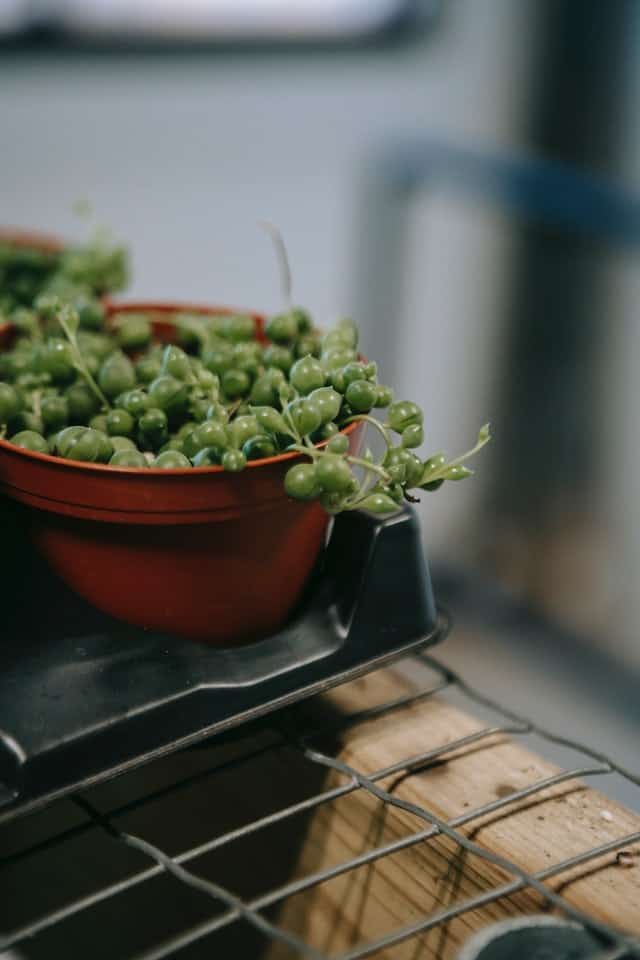IString of pearls (Senecio rowleyanus) is a charming succulent with unique bead-like foliage that captivates many indoor gardeners. However, when it comes to humidity, it’s essential to understand the plant’s preferences and how to care for it in different environments.
Can String of Pearls Handle Humidity?
Yes, string of pearls can handle humidity, but they don’t thrive in excessively humid conditions. These succulents are native to arid regions of South Africa, where they have adapted to low humidity levels. However, they can tolerate moderate humidity levels if you take some precautions.
Understanding String of Pearls and Humidity
String of pearls is a drought-tolerant succulent, which means it prefers dry conditions. In their natural habitat, these plants receive minimal rainfall and thrive in well-draining soil. High humidity levels can create challenges for string of pearls, as they are prone to issues like root rot and fungal infections when their roots remain consistently damp.
Counteracting High Humidity for String of Pearls
If you live in an area with high humidity or want to ensure your string of pearls remains healthy in less-than-ideal conditions, here are a few strategies you can employ:
Well-Draining Soil: Use a well-draining succulent or cactus mix to ensure excess moisture does not accumulate around the roots.
Pot Choice: Select a pot with drainage holes to allow excess water to escape, preventing waterlogged soil.
Limited Watering: Be cautious with your watering schedule. Allow the soil to dry out completely between waterings. Overwatering is a common issue with string of pearls in humid environments.
Proper Ventilation: Ensure good air circulation around your plants. This can help reduce humidity levels in the immediate vicinity of your string of pearls.
Avoid Overcrowding: Avoid overcrowding your string of pearls with other plants. This can create conditions where humidity levels rise and promote fungal growth.
Humidity Tray: Place a humidity tray filled with water and pebbles near your string of pearls. This can help increase humidity in the immediate area without directly affecting the plant.
Reduce Spray or Mist: Avoid misting your string of pearls, as this can add moisture to the leaves and contribute to humidity-related issues.
Monitor and Adjust: Keep an eye on your string of pearls and adjust your care routine as needed based on its response to the environment. If you notice signs of overwatering or humidity-related stress, reduce watering and increase airflow.
Signs of High Humidity Stress
It’s essential to recognize the signs that your string of pearls may be stressed due to high humidity. These signs include:
Yellowing Leaves: Yellowing leaves can indicate that the roots are staying too wet due to high humidity.
Soft and Mushy Stems: Overly moist conditions can cause the stems of your string of pearls to become soft and mushy.
Leaf Drop: If your plant starts shedding leaves, it may be reacting to excessive humidity or overwatering.
Fungus and Mold: High humidity can create a favorable environment for fungal growth on the soil or leaves.
Root Rot: Prolonged exposure to high humidity without proper care can lead to root rot.
My Conclusion
While string of pearls can tolerate moderate humidity levels, they do best in drier conditions. Understanding the plant’s natural habitat and adapting your care routine accordingly is key to keeping your string of pearls healthy.
Remember that succulents like string of pearls are well-suited to environments with low humidity, so it’s essential to monitor their health and make adjustments as needed to counteract the effects of high humidity. With proper care and attention, you can enjoy the beauty of this unique succulent in various climates.

